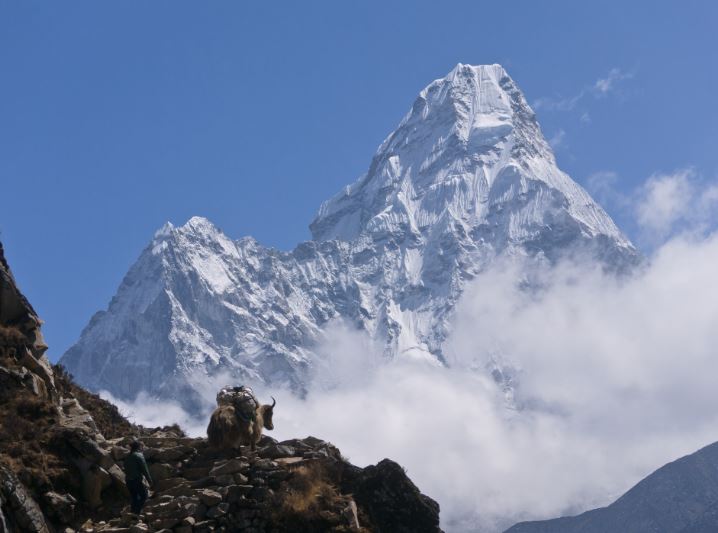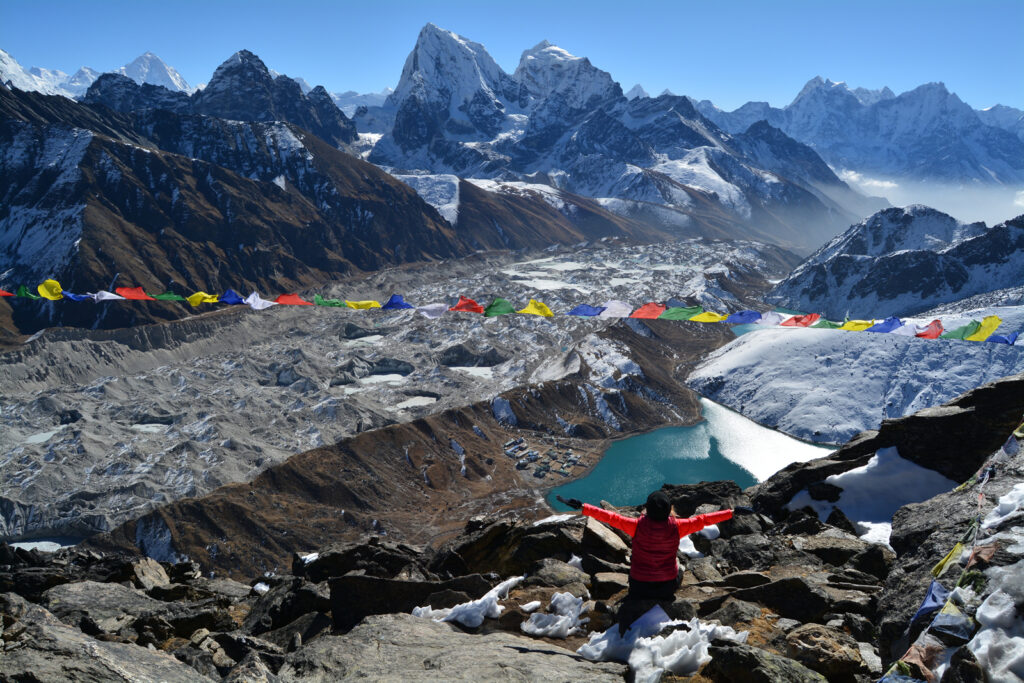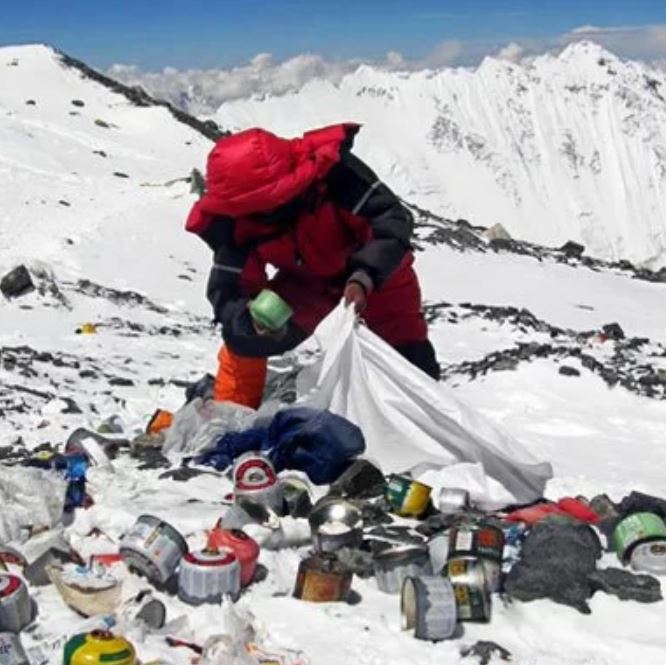Sagarmatha National Park in Nepal was created on July 19, 1976. The centerpiece of the park is Mt. Sagarmatha, known to most of the world as Mt. Everest.

Sagarmatha National Park encompasses 443 square miles of the highest region in the world, the Great Himalayan Range. The name Sagarmatha comes from the local language, meaning “sky-head.” Indeed, the region has its head in the sky. Mt. Everest itself is 29,021 feet above sea level. Most of the park lies above the tree line, with only lichens and other ground-hugging vegetation covering large expanses, and permanent snow-cover at the highest levels. Only 3% of the park area is forested.
The park is also home to the Sherpa people, the Nepali Buddhists known for a culture built around the high peaks. About 7700 Sherpas live within the park, and preserving their heritage and culture is considered an important element of park management. The combination of the world’s highest ecosystem and its attendant human culture prompted UNESCO to designate the park a World Heritage Site in 1979.

The biodiversity of the park is minimal, but it provides habitat for many species uniquely adapted to high altitudes. The endangered snow leopard, musk deer and red panda all call Sagarmatha home. Within the park are headwaters of several major rivers and the Gokyo wetlands, a Ramsar designated wetland of international value.
Visitation to the park continues to rise. More than 45,000 tourists visit the park annually. Most visitors are from the U.S., U.K. and Australia. The biggest reason to visit is, of course, as Sir Edmund Hillary said, “because it is there.” Climbing Mt. Everest attracts over 600 mountaineers annually. More than 10,000 climbers and Sherpas have reached the top successfully since Hillary and Tenzing Norgay did so in 1953. A typical climb requires 39 days, allowing the body to adjust gradually to the decreasing oxygen. In 2018, a record 670 people, climbers and their Sherpas, reached the summit. Tragically, nearly 300 people have lost their lives pursuing the top of the mountain.

All these people on the mountain for so long has earned Mt. Everest an unwelcome moniker—the world’s highest garbage dump. Climbers leave a lot behind—tents, climbing gear, general trash, excrement—and getting it back down is strenuous and dangerous. One climber remarked, “Everest is no longer a wilderness experience. It’s a McDonald’s experience.”An annual ascent just to collect garbage began in 2007. Participants have removed more than 20 tons of trash, but the problem continues.
Taking pictures and leaving only footprints just doesn’t work on the world’s highest peak.
References:
Alanarnette.com. Everest by the Numbers: 2019 Edition. Available at: https://www.alanarnette.com/blog/2017/12/17/everest-by-the-numbers-2018-edition/. Accessed April 2, 2020.
Dundruk, Master Krugga. 2020. Environmental Issues on Mt. Everest. Tibet Travel, March 31, 2020. Available at: https://www.tibettravel.org/tibet-everest-base-camp-tour/everest-environmental-issues.html. Accessed April 2, 2020.
Government of Nepal. Sagarmatha National Park. Available at: http://www.sagarmathanationalpark.gov.np/. Accessed July 20, 2017.
Sehgal, Jasvinder. 2019. Cleaning up Mount Everest – the world’s highest rubbish dump. DW, 20.2.19. Available at: https://www.dw.com/en/cleaning-up-mount-everest-the-worlds-highest-rubbish-dump/a-47467115. Accessed April 2, 2020.
UNESCO. Sagarmatha National Park. Available at: http://whc.unesco.org/en/list/120. Accessed July 20, 2017.
